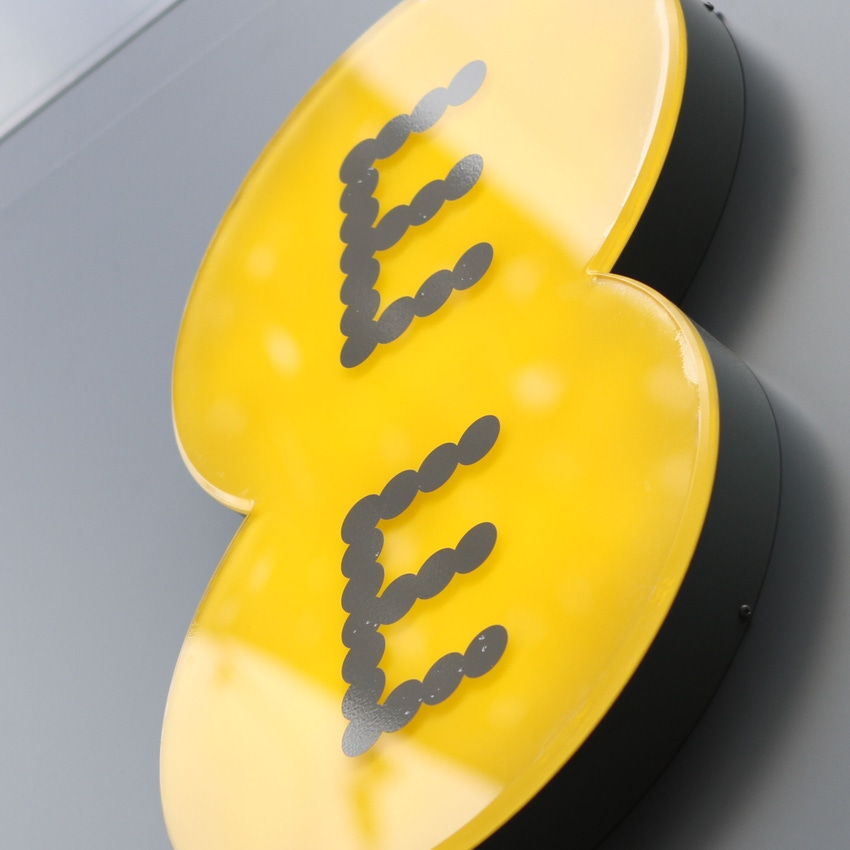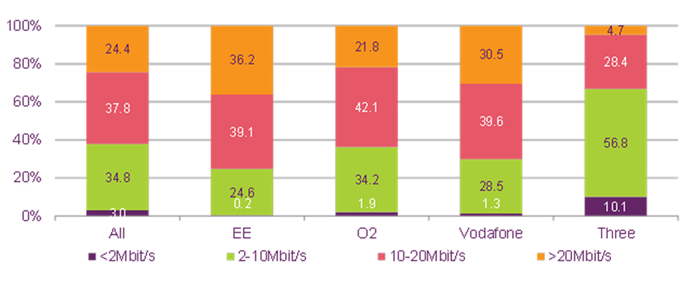Ofcom declares EE 4G fastest, but disappoints on browsing
Ofcom has done some pretty substantial digging into the comparable differences between 4G and 3G coverage in the UK, and undertook some hefty analysis of individual network performance for the major MNOs in the market.
April 2, 2015

Ofcom has done some pretty substantial digging into the comparable differences between 4G and 3G coverage in the UK, and undertook some hefty analysis of individual network performance for the major MNOs in the market.
Despite the regulator’s best attempts to undersell the depth and quality of the findings by simply presenting that “4G significantly outperforms 3G networks”, the research collated 120,000 test samples from smartphones used across EE, O2, Vodafone and Three’s networks across 5 major cities in the UK. The analysis investigated four key measurements of performance: download speeds, upload speeds, web browsing speeds and latency.
In the majority of cases, it unveiled results showing EE to be the fastest network with the broadest coverage; however it did show the MNO to be falling behind its competitors significantly with regards to web-browsing experience.

Distribution Of 4G Download Speeds By Provider – Q4 2014
A headline view of the research yielded the following results of 4G vs 3G performance. Average 4G download speeds sit at 14.7Mbps compared to 5.9 on 3G, with probability of speeds greater than 2Mbps sitting at 97% on 4G over 74.8% on 3G. Average upload speeds sit at 13.6Mbps against 1.6Mbps, with average web browsing speeds coming in at about a third of a second faster on 4G than 3G, with a considerably higher probability of loading a page in less than one second (83.4% vs 46.7%).
Since June 2014, EE’s 4G network coverage has expanded to 81% of UK home and business premises from 68%, which puts it noticeably ahead of its nearest competitors for 4G coverage. Vodafone has increased its coverage from 37% to 65% in the same time frame, with O2 jumping up from 43% to 66%. Meanwhile, Ofcom included Three’s 4G coverage for the first time in this year’s report, coming in at 53% of premises.
EE’s also coming in as the fastest 4G network, on average, achieving download speeds of 18.6Mbps, as well as the fastest average upload speed of 17.6Mbps. This works out to be roughly 20% above the national average 4G download speed of 14.7Mbps, with Vodafone and O2 playing catch up on 16.4Mbps and 13.9Mbps respectively. Three appears to be lagging behind somewhat, with average download speeds of 8.5Mbps. However, both EE and Vodafone clock in speeds above 20Mbps more than 30% of the time.
Despite fastest speeds and coverage, however, EE did lag behind quite considerably when it came to web browsing speeds. Polling, research and survey specialist YouGov reckons web-browsing is the primary activity people do more of than anything else after upgrading to 4G; so it’s pretty interesting to see that EE’s average 4G web browsing speeds trailed considerably behind its competitors.
Across all four networks, 4G web browsing saw pages load in less than one second in 83.4% of all tested samples. This was the case in 93.1% of all pages loaded with O2, 90.9% with Vodafone, 87.6% with Three, but just 62.9% with EE. It appears that reliability of web browsing is a major stumbling block for the operator, with 29.9% of all web browsing pages timing out after more than 15 seconds.
Essentially, nearly one in three of all web pages loaded on EE 4G fail to complete and time out. This presents an interesting question of what’s most important to the average consumer: speed, coverage or reliability.
It will also be interesting to see how future results are affected by the forthcoming acquisition of O2 UK by Hutchison Whampoa, owner of Three. Any company born out of a potential merger of the two will benefit from having the UK’s largest mobile subscriber base of nearly 35 million, and as such will face significant pressure to ensure its network performance is representative of its dominant market share.
UPDATE – 14:40, 2nd April: Unsurprisingly EE isn’t too happy with Ofcom’s data on its web browsing performance and sent us the following statement: “The anomalous web browsing measurement is flawed and not representative of the typical consumer usage. This measurement is based on access to a private server, that no regular customer would ever visit. This is not what we would expect from the regulator. For a report designed to help consumers choose a mobile service we find this misleading, and inconsistent with Ofcom’s own objectives.”
About the Author(s)
You May Also Like








.png?width=300&auto=webp&quality=80&disable=upscale)


_1.jpg?width=300&auto=webp&quality=80&disable=upscale)


.png?width=800&auto=webp&quality=80&disable=upscale)